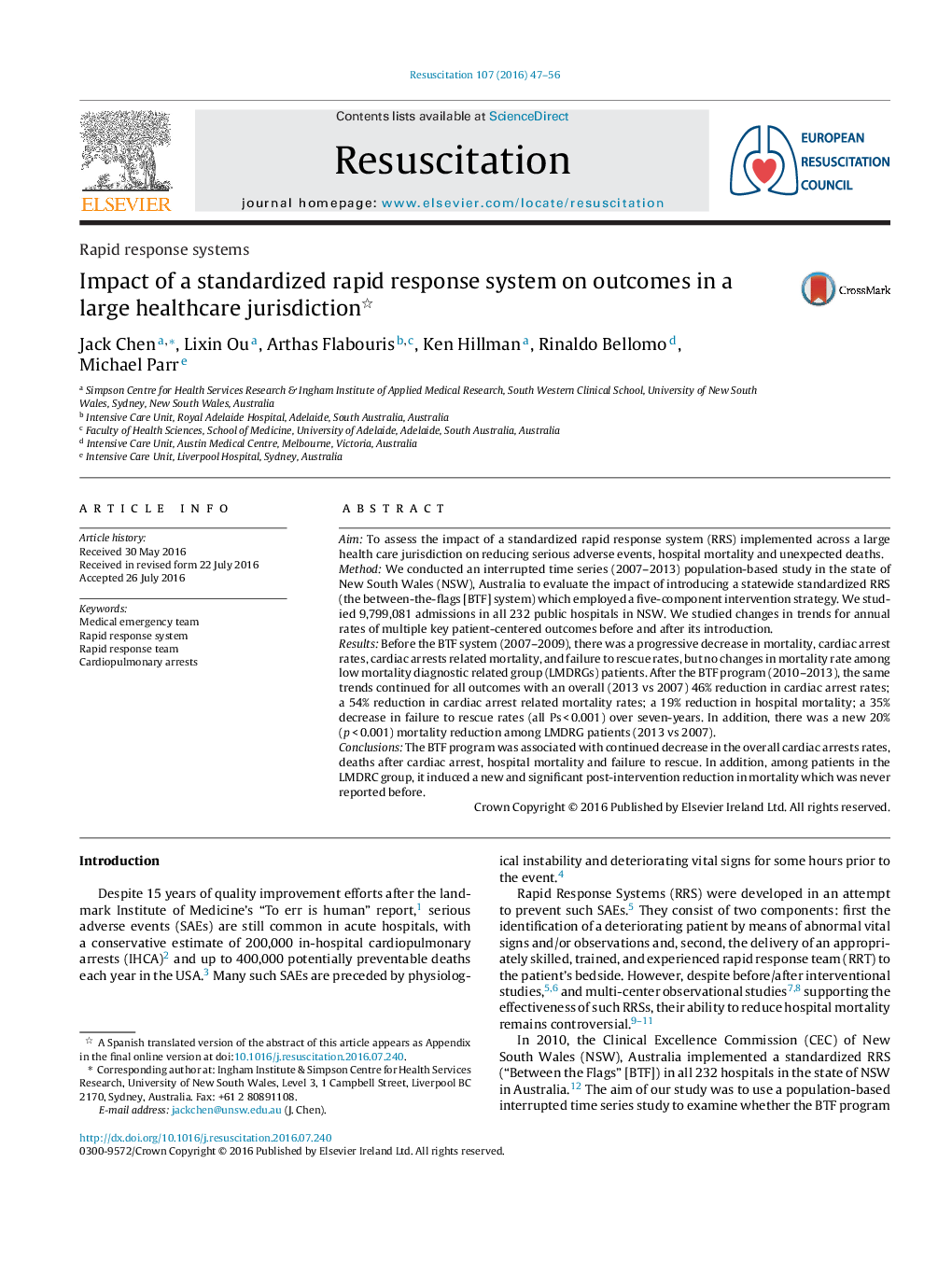| Article ID | Journal | Published Year | Pages | File Type |
|---|---|---|---|---|
| 3007626 | Resuscitation | 2016 | 10 Pages |
AimTo assess the impact of a standardized rapid response system (RRS) implemented across a large health care jurisdiction on reducing serious adverse events, hospital mortality and unexpected deaths.MethodWe conducted an interrupted time series (2007–2013) population-based study in the state of New South Wales (NSW), Australia to evaluate the impact of introducing a statewide standardized RRS (the between-the-flags [BTF] system) which employed a five-component intervention strategy. We studied 9,799,081 admissions in all 232 public hospitals in NSW. We studied changes in trends for annual rates of multiple key patient-centered outcomes before and after its introduction.ResultsBefore the BTF system (2007–2009), there was a progressive decrease in mortality, cardiac arrest rates, cardiac arrests related mortality, and failure to rescue rates, but no changes in mortality rate among low mortality diagnostic related group (LMDRGs) patients. After the BTF program (2010–2013), the same trends continued for all outcomes with an overall (2013 vs 2007) 46% reduction in cardiac arrest rates; a 54% reduction in cardiac arrest related mortality rates; a 19% reduction in hospital mortality; a 35% decrease in failure to rescue rates (all Ps < 0.001) over seven-years. In addition, there was a new 20% (p < 0.001) mortality reduction among LMDRG patients (2013 vs 2007).ConclusionsThe BTF program was associated with continued decrease in the overall cardiac arrests rates, deaths after cardiac arrest, hospital mortality and failure to rescue. In addition, among patients in the LMDRC group, it induced a new and significant post-intervention reduction in mortality which was never reported before.
